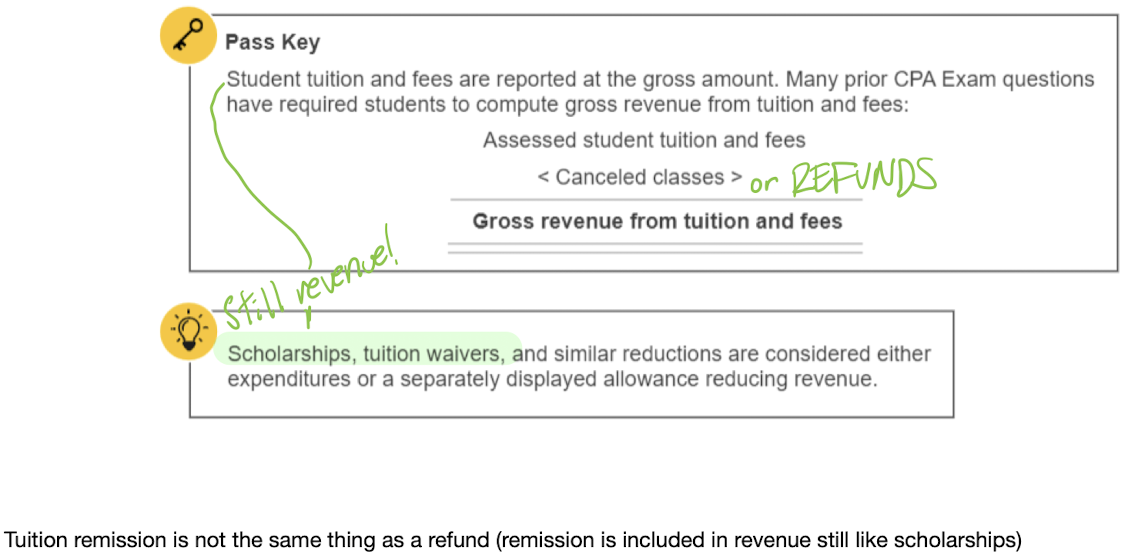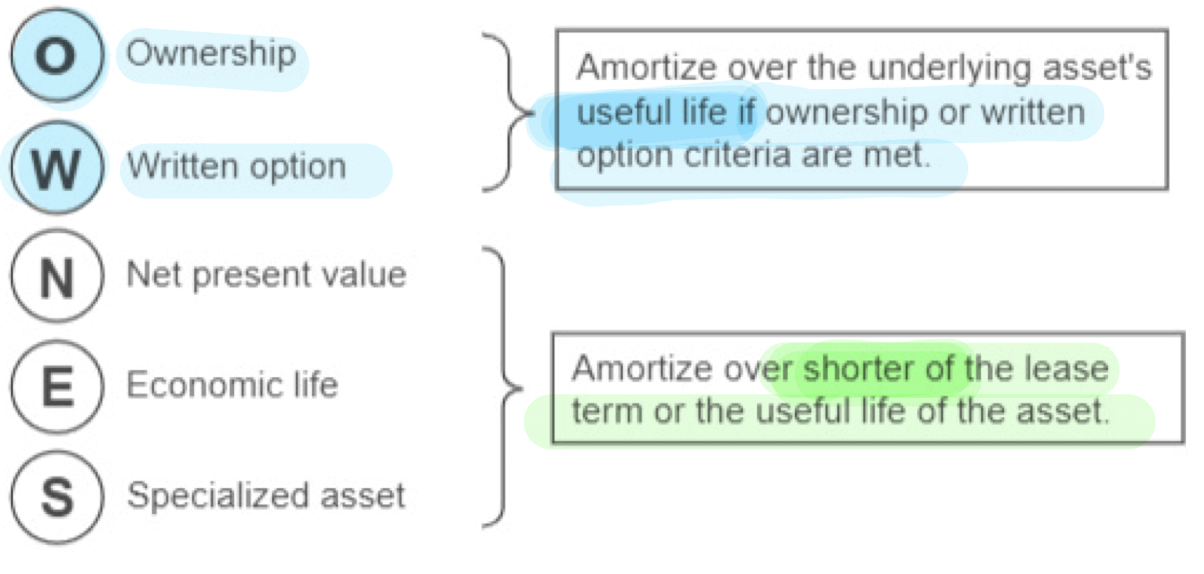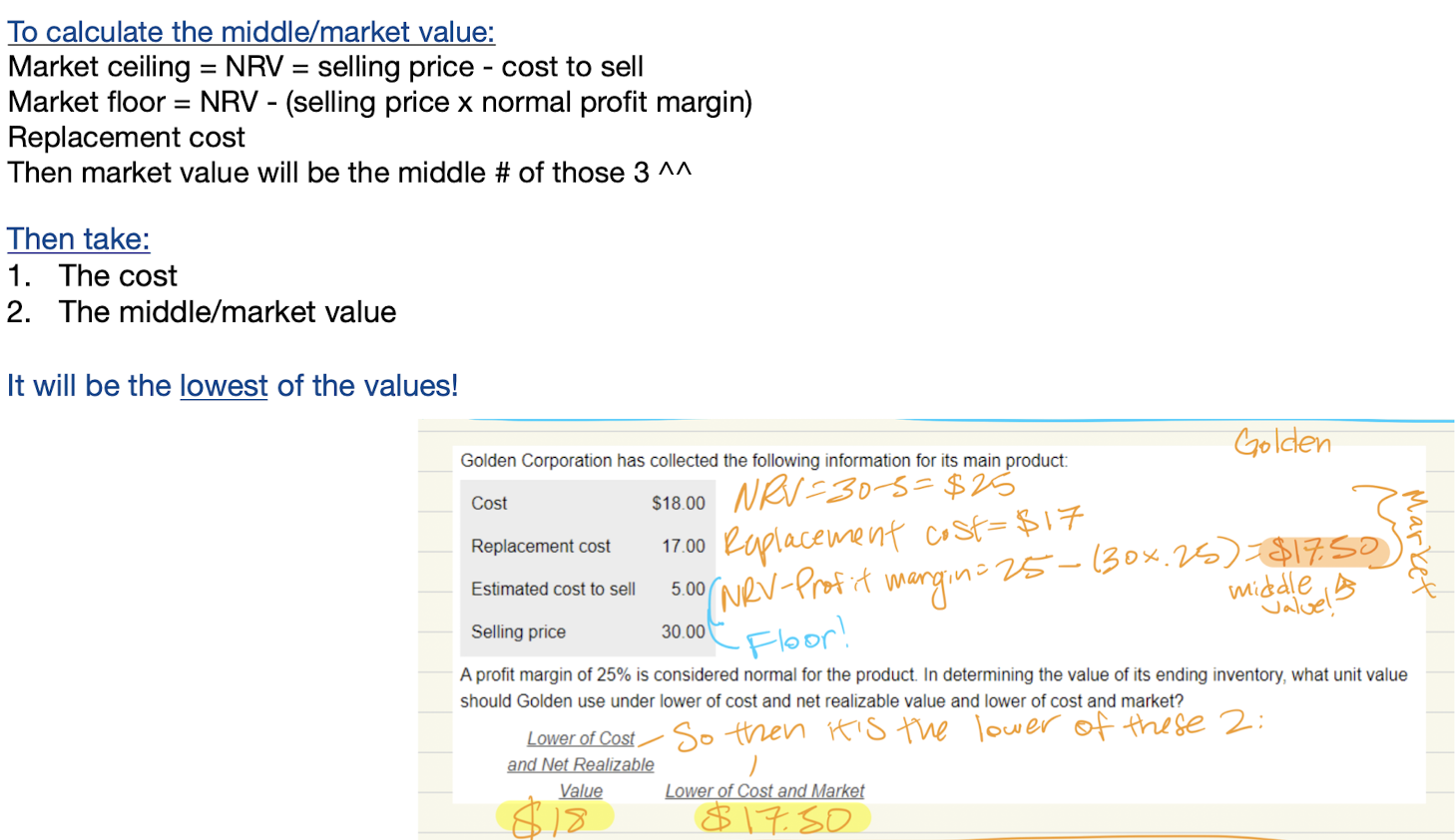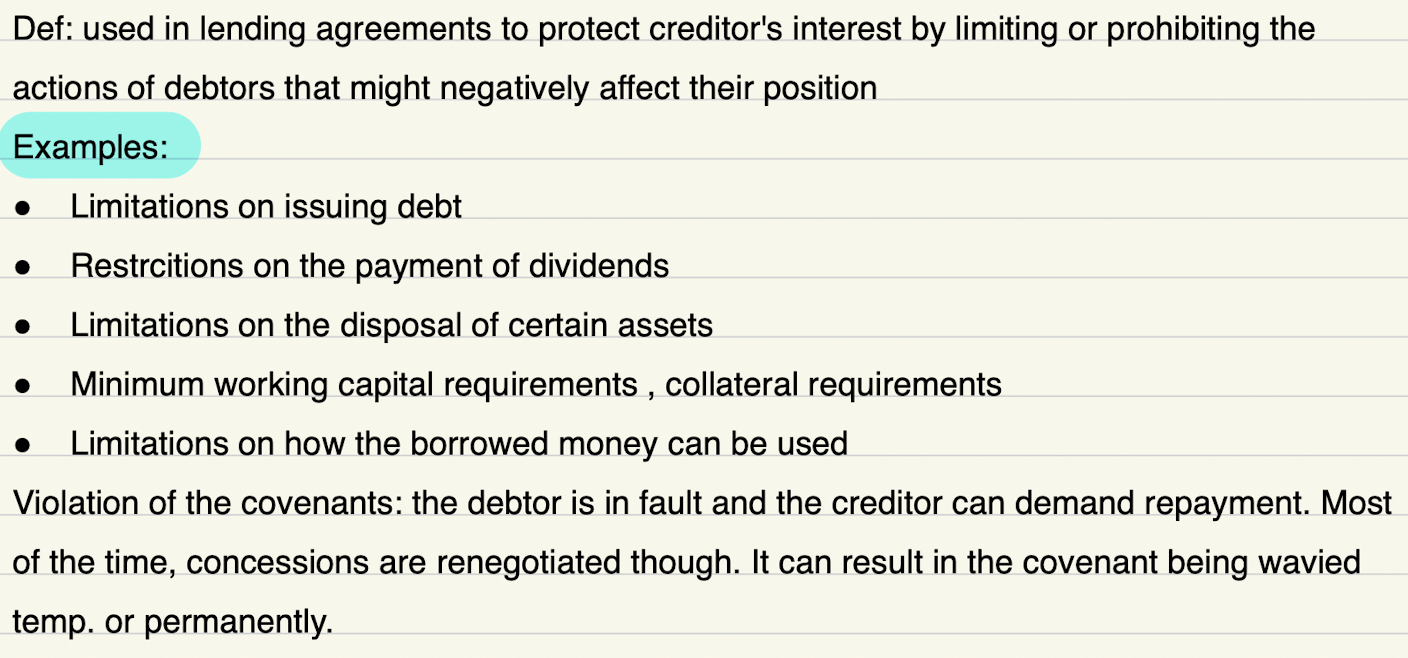EVERYTHING FAR 🧠
1/141
There's no tags or description
Looks like no tags are added yet.
Name | Mastery | Learn | Test | Matching | Spaced |
|---|
No study sessions yet.
142 Terms
Operating, investing, or financing?
Purchasing stock
Investing
Operating, investing, or financing?
Borrowing funds
Financing
Operating, investing, or financing?
Paying interest on debt
Operating
Operating, investing, or financing?
Paying taxes
Operating
Operating, investing, or financing?
Anything with trading securities
Operating
Operating, investing, or financing?
Purchasing investments like bonds
Investing
Operating, investing, or financing?
Paying principal on debt
Financing
Operating, investing, or financing?
Issuing stock/bonds
Financing
Operating, investing, or financing?
Repurchasing stock
Financing
Operating, investing, or financing?
Paying dividends
Financing
Operating, investing, or financing?
Paying debt and extinguishment costs
financing
Operating, investing, or financing?
Collecting interest or dividends on investments
Operating
Operating, investing, or financing?
Goodwill impairment
Operating
Required financial statements for non profits
Stmt of financial position (B/S), stmt of activities, and stmt of cash flows
Primary purpose of non profit’s stmt of activities
To demonstrate how the organization's resources are used in providing various programs and services.
and to provide relevant info to its resource providers
Primary purpose of non profit’s stmt of financial position
To provide info about the assets, liabilities, and net assets, and about their relationship to one another at a moment in time
Categories/items in the stmt of financial position
Assets, liabilities, and net assets (and in that specific order too)
Like a BS
Primary objective of financial reporting for the government
Accountability
What is an endowment fund?
a fund of assets to provide income for the maintenance of the non profit (like a 20 year investment that designates that the interest income be used for a certain purpose, and then the fund itself has a purpose when it expires)
What are the restriction types? (like for an asset with donor restrictions)
Specified purpose and time
Trading securities
What they are: Debt securities bought and held to sell in the near term
How they are reported on BS: FV, current assets
What cash flow: Operating or investing
Interest/gain/loss would be on the income stmt (gains/losses in net income)
CECL loss if CV>FV
Loss = CV - PV of expected cash flow
CV=Amort. cost
Available for sale debt securities (AFS)
What they are: Those not meeting the definition of trading or HTM
How they are reported on BS: FV, current OR non-current assets
What cash flow: Investing
Interest and any realized gain/loss would be on the income stmt
Income if selling it= Sale price - CV
Unrealized gains/losses would be in OCI
CECL loss if CV>FV
Loss = CV - PV of expected cash flow
CV=Amort. cost
Held to maturity debt securities (HTM)
What they are: corp has intent and ability to hold them to maturity
How they are reported on BS: most likely non-current, amortized cost
What cash flow: Investing
Interest would be on the income stmt (no gains or losses)
CECL loss if CV>FV
Loss = CV - PV of expected cash flow
CV=Amort. cost
What are the different names for the Stated Rate? (for bond amort)
stated rate, incremental borrowing rate
What are the different names for the market rate? (for bond amort)
Effective, market, implicit, “to yield x%”
Always use this rate for PV factors
Cost method
When you purchase TS, it’s the simple entry
When you sell that TS, the value of the stock is that purchase price above
But if it’s a loss, it will hit RE first then APIC
Par value/legal method
TS is debited at par value of the shares repurchased
When selling shares, it won’t hit RE

Change in accounting Estimate
Change in accounting ESTIMATE
Prospective approach: now and future periods
No effect on previously reported RE
Events/examples:
Changes in lives of fixed assets
Computation of warranty costs
Change in accounting Principle
Change in accounting PRINCIPLE
RETROSPECTIVE
Always adjust beginning RE, net of tax
You're usually going from one acceptable method to another
Events:
Change in reporting entity (M&A, consolidation)(this one restates all prior periods)
INVENTORY METHODS BASICALLY (like weighted average, FIFO, etc.)
Main causes for DTAs
Estimated liability/warranty expense
Prepaid rent, interest, and royalties
• The IRC uses the term "prepaid"
• GAAP uses "unearned"
Bad debt expense
NOL carryforward
Main causes for DTLs
Installment sales
Depreciation expense (only if tax>book)
Amortization
Prepaid expenses
Unrealized gain/loss on trading securities
What are the characteristics/requirements of governmental funds?
Modified accrual accounting
Current financial resources measurement focus
Often a budgetary focus
Also a focus on the fund balance (where as proprietary funds focus on the net position)
What are the characteristics/requirements of proprietary/fiduciary funds?
Proprietary funds use the full accrual basis of accounting.
Their focus is economic resources measurement!!
(also this one is similar to commercial accounting)
SE CIPPOE
What basis of accounting must non profits use?
Full accrual
Are unconditional promises to give considered contributions?
Yes, unconditional promises to give are contributions
What is included in gross revenue from tuition and fees?

When fin stmt income exceeds taxable income, is it a DTA or DTL?
Fin stmt income > Taxable income = DTL
(Imagine that we LIKE when taxable income is low)
How long do you amortize a lease?

When accruing a loss that is probable and you are given a range of possible losses and the amount can be reasonably estimated, what amount do you accrue?
the MINIMUM of the range
(if it can’t be reasonably estimated, give the range itself)
What cost are purchased intangible assets recorded at?
at COST, not fair value
What is the inventory equation for errors in inventory?
Begin inv
+Purch
(COGS)
End inv
How do you use lower of cost or market?

What is the NRV equation?
NRV = selling price - cost to sell
Form 10-Q
What type of filing: Quarterly
Large accelerated and Accelerated: 40 days
All others: 45 days
This filing is NOT audited!!
Which B/S periods: most recent quarter end, end of the preceding fiscal year
Form 10-K
What type of filing: Annually
Large accelerated: due 60 days after, $700 million
Accelerated: 75 days, $75-700 million (small company technically)
All others: 90 days
This filing is audited!!
Gross profit margin equation
Gross profit margin = Sales (net) - COGS
Sales (net)
Quick ratio
= Cash & Cash Equivalents + Marketable Securities + Net Receivables
Current Liabilities
Issued vs Outstanding Stock
Issued is ALL of the stock, O/S is just the stock that is owned
Change in accounting principle that is inseparable from a change in estimate
Only to LIFO
Any depreciation or amort changes!!!
Prospective (no prior period adj)
Classify as change in Estimate (I think)
Items in OCI
PUFI:
Pension adjustments
Unrealized gains/losses in AVAILABLE FOR SALE DEBT securities and hedges
Foreign currency items
Instrument-specific credit risk
Also OCI is reported NET of tax
What is in comprehensive income?
Comprehensive income = Net income + OCI
(net income includes loss from disc. operations)
Basic EPS formula
= Net income - Preferred dividends
WACSO
Debt covenants

Gain/Loss on bond extinguishment before maturity
= Reacquisition price - Net carrying amount
Negative answer = gain
Positive answer = loss
Diluted EPS formula
= income + interest on dilutive securities(net of tax)
WACSO
also we don't worry about dividends paid on stock here ^^
and this ADDS converted shares
How do you find profit using the percentage of completion method/rev rec OVER time?
Also if it asks for Year 2 profit, subtract Year 1 profit from the amount that you come to!

How do you find the current liability/asset using the percentage of completion method/rev rec OVER time?
To find current liability or asset:
+ Actual costs incurred
+ GP for the year
(Progress billings)
Asset if positive or Liability if negative
How do you find profit using the completed contract method/rev rec AT A POINT in time?
Revenue is only recognized when project is complete!
Only losses will be booked ASAP
Contract price
(Total Cost)
Expected GP - if this is negative, the loss will be booked ASAP
BASE equation for credit loss expense
Beginning balance
(Write offs)
Account Recoveries
Credit loss expense (add this)
Ending balance
Inventory equation (for errors in inventory, etc)

Equation for Total Income Tax Expense with DTAs/DTLs
Tax Expense
+DTL
(DTA)
Total Income Tax Exp
Tax provision vs Tax liability
Tax provision = how much you owe for the year
Tax liability = how much you have left to pay
(so = tax provision - ES pmts) like MCQ-849
JE for bond issuance at a DISCOUNT
Cash xx
Discount xx
BP xx
JE for bond issuance at a PREMIUM
Cash xx
BP xx
Premium xx
Equation for calculating Goodwill under the Equity Method
Purchase price
(FV of assets x % owned)
Goodwill
How do you calculate income from an investment under the Equity Method?
Income from an investment = Subsidiary’s income x % owned
(Disregard any dividends)
Under the Equity Method, are dividends income or a reduction of investment?
Dividends are a reduction of investment
How do you find the ending CV of an investment under the Equity Method?
Beg. Carrying Amount
+[(Income -Dividends) x % of share]
End. Carrying Amount
Are pref stock dividends treated as income or a reduction of investment under the Equity Method?
Pref stock dividends are ALWAYS only income
When you populate an amortization table for bonds, what interest rate are they going to want you to enter?
Enter the effective market rate (and if it is semi-annual, enter the semi-annual rate like 2.5% instead of 5%)(like TBS 4202 or 34000)

If any of the OWNES criteria are met, what kind of lease is it?
Finance lease! (so like 75% of the lease life or 90% of the NBV)
What is the GAAP rule/basis for an asset contributed to a partnership?
Use the FV of the asset contributed
What is the Tax rule/basis for an asset contributed to a partnership?
Use the NBV of the asset contributed
Is OCI usually a credit balance or debit balance?
OCI is a credit balance
If someone has over 20% ownership of a nonvoting stock, would you use the equity method or fair value method?
Fair value method because it is nonvoting
MAC GRaSPP/SE CIPPOE:
Internal service fund
S in SE CIPPOE
MAC GRaSPP/SE CIPPOE:
Enterprise
E in SE CIPPOE
MAC GRaSPP/SE CIPPOE:
Custodial
C in SE CIPPOE
MAC GRaSPP/SE CIPPOE:
Investment trust (external investment pools)
I in SE CIPPOE
MAC GRaSPP/SE CIPPOE:
Private purpose (activities not properly accounted for either as pension or investment trust funds)
P in SE CIPPOE
MAC GRaSPP/SE CIPPOE:
Pension
P in SE CIPPOE
MAC GRaSPP/SE CIPPOE:
Other Employee trust fund
OE in SE CIPPOE
MAC GRaSPP/SE CIPPOE:
General
G in MAC GRASPP
MAC GRaSPP/SE CIPPOE:
Special Revenue
R in MAC GRASPP
MAC GRaSPP/SE CIPPOE:
Debt Service (accumulation of resources)
S in MAC GRASPP
MAC GRaSPP/SE CIPPOE:
Capital Projects (used for acquisition or construction of major capital assets)
P in MAC GRASPP
MAC GRaSPP/SE CIPPOE:
Permanent (legally restricted to an extent, like an endowment fund)
P in MAC GRASPP
Cash flow for nonprofits: What is a contribution designated to be used for long-lived assets?
Operating cash flow
Cash flow for nonprofits: What is purchase of equity securities?
Investing cash flow
Cash flow for nonprofits: What is contributions for contributions for the purpose of acquiring, constructing, or improving PPE or other long lived assets?
Financing
Impairment loss test
Impaired if CV > Future cash flow
(you’re impaired if you care more about your future)
Impairment loss formula (not the test)
Impairment loss = CV - FV
Operating, investing, or financing?
Gains/losses from sales of fixed assets
Operating - but they need to be backed out from NI!
Gains - subtract
Losses - add
When they show you a consolidated balance sheet and ask for the amount eliminated for something: eliminated profit
eliminated profit = parent inventory + sub. Inventory
= amount
(consolidated inventory)
answer
When they show you a consolidated balance sheet and ask for the amount eliminated for something: intercompany sales
intercompany sales= revenues added together
(consolidated revenue)
answer
When they show you a consolidated balance sheet and ask for the amount eliminated for something: amount payable for intercompany sales
AP for intercompany sales= AR balances added together
(consolidated AR balance)
answer
How to find the Bonus in a Partnership
Bonus = Partner balances + New person's investment
= Total balance
= Total x % Share of new guy
= His capital account balance
= His capital account balance - Investment amount
= Bonus!
How to find the Goodwill in a Partnership
Goodwill = New guy's investment / % share
= Total capital
= Total - existing balances (incl. new guy's)
= Goodwill
How is a stock split applied retroactively?
It will be applied to ALL years presented (so even if the split is in Yr 2, you apply it to Yr 1 as well)
Also, apply the split to the existing amounts throughout the year rather than just multiplying the most recent balance by the split
Under a bill and hold arrangement, when is revenue recognized on a sale?
When the assets are ready for transfer (and also these are all met in the SS)
